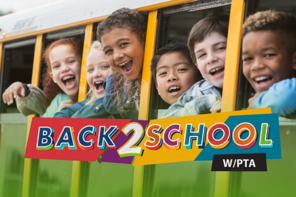School has been enormously challenging for students, teachers and parents who have had to juggle a mix of distance, hybrid and in-person learning—in addition to the other big changes—during the COVID-19 pandemic. This year, our children have returned to in-person learning, albeit with social distancing and other safety practices in place. However, many parents are wondering what they can do to ensure their children get the support they need to address potential learning gaps that may have occurred during the upheaval caused by the pandemic.
As an educator with over 30 years of experience, and as a mom, grandmother and long-time PTA supporter, I can share five key things you can do to support your child’s learning throughout this school year and in the years ahead.
1. Look at Their Work
Try to assess whether and where your child is struggling academically. With literacy, pay attention to reading and spelling. Ask your child to read to you, create a grocery list or write a letter to grandparents or other relatives. With math, it’s key to know that skills build on each other. If your child lacks the ability to add with ease, they might struggle with understanding multiplication. Watch how your child handles age-appropriate everyday activities. Does your young child recognize a group of five without counting each item?
National PTA has math and reading guides for learning goals at each grade level in reading and math to help. You can also look online at state resources, district benchmarks or ask your child’s teacher for relevant materials.
2. Ask About Assessment Data
Familiarize yourself with end-of-year benchmarks for this past year and know where your child is related to those. Frequently, schools send home or otherwise communicate this academic performance data. If not, data records related to your child’s progress will likely be on file at the school. National PTA has state-by-state Assessment Guides to help you understand what grades and subjects are tested, and how that data is used.
If you’re able, it’s helpful to try to learn about observational data too, such as whether your child participated equally across subjects—your child’s report card might include this information. Make it a priority this school year to build a relationship with your child’s teacher to understand expectations and create learning goals. These should focus on addressing any unfinished learning or areas of challenge for your child.
3. Don’t Forget Social and Emotional Development
Schools aren’t just about academics. Social and emotional development is critical to student success, so it’s also important to try to assess whether there are aspects your child needs to work on. These might include collaboration, problem-solving, regulating emotions or practicing good decision-making. National PTA’s new Healthy Minds initiative can help you learn the basics.
Teachers and other school staff increasingly have training and materials they might be able to share with you related to social and emotional development. As you get to know your child’s new teacher, include asking about these aspects in your communications and conferences.
4. Include Learning Fun in Routine Activities

It’s always a good idea to encourage children to engage in reading, writing and math in their daily lives. Try to continue to make sure those activities are fun by helping children access books tied to their interests, equipping them with journals so they can write creatively or express their emotions about daily life, or picking up stationery so they can write to relatives or engage with pen pals. In math, work with your children to develop budgets for shopping trips, and practice measuring and estimating during cooking or gardening projects.
Commuting and car trips can also be great opportunities to practice math facts or have a friendly family spelling bee. Mile markers, exit numbers and length of time to get from one location to the other provide practice for calculations and elapsed time. While traveling with my own children and now grandchildren, we find words on road signs that begin with each letter in alphabetical order or look for different states on license plates. No matter how many times we play, these games quickly become lively competitions to find the most unusual term or furthest state. Family vocabulary and knowledge of geography have increased tremendously through the years.
Small Steps to Big Success
Our children may need extra support to make up lost ground due to the pandemic. But this doesn’t have to be stressful or scary! Incorporating your assistance in small, engaging ways every day can have a big impact. Continue to check in with your child and their teachers as you take these four steps to address any learning gaps and ensure they have a good school year, filled with opportunities to learn and grow in new ways.
Nell McAnelly has taught mathematics at the high school and university levels for over 30 years and has received numerous teaching awards. She has three children and seven grandchildren. She is co-director emeritus at the Gordon A. Cain Center for STEM Literacy at Louisiana State University and chair of the Board of Directors for the Public Benefit Corporation of Great Minds, the developer of Eureka Math, Wit & Wisdom, and PhD Science.





